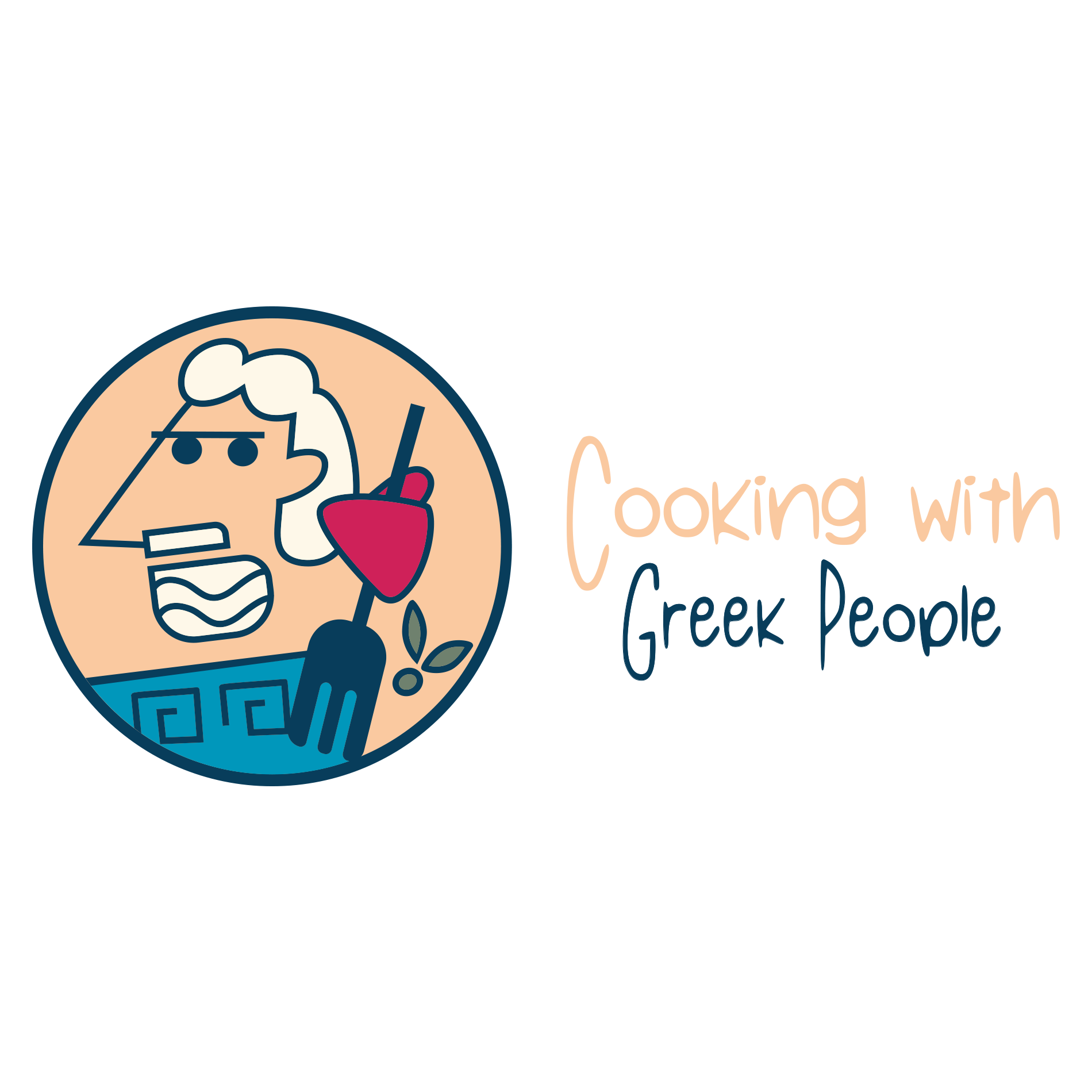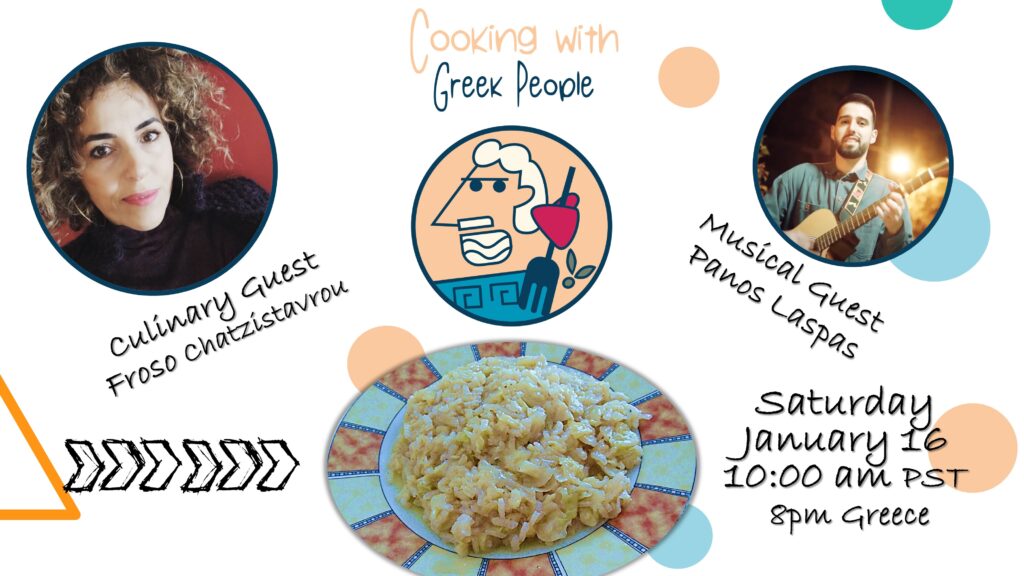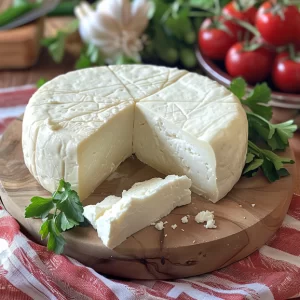Ancient Greek history is filled with fascinating aspects, from the formation of democracy to epic poetry, theatre, and influential city-states. Yet, the everyday life, particularly the diet of ancient Greeks, remains relatively obscure. In this blog post, we’ll explore what the ancient Greeks ate, focusing primarily on the Archaic and Classical periods. What Did the Ancient Greeks Eat?
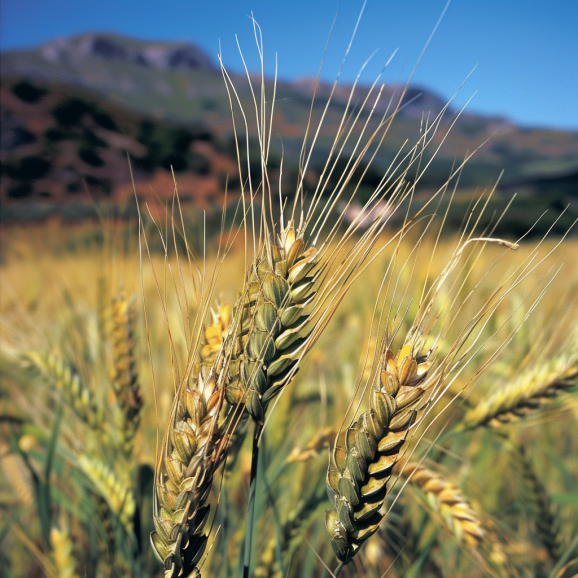
Climate and Agriculture
The climate in ancient Greece varied significantly by region. Coastal lands enjoyed a Mediterranean climate with long, dry summers and mildly cold, wet winters. In contrast, northern Greece and the high mountains experienced colder, wetter conditions, with constant rainfalls in spring and fall and frequent snowfalls in winter.
Greece is approximately 75% mountainous, with thin soil that’s difficult to cultivate. Only about 25% of the land was good for farming, with the largest fertile plains found in Thessalia, Messinia, and Boeotia. The islands, on the other hand, had varied microclimates, typically drier with strong winds.
Regarding water supply, ancient Greece had few large lakes, with notable ones being Lake Kopais in Boeotia and Lake Trichonida in Aetolia. Thousands of small streams and rivers flowed from the mountains but often dried up during hotter periods. Major rivers like the Aliakmonas, Achelous, Pinios, and Alpheus were vital for cultivation and consumption. Most regions depended on annual rainfall for crops, making agriculture vulnerable to droughts and excessive rain.
Due to the rugged terrain, trade was predominantly conducted via the sea. Trade primarily occurred between neighboring regions or among city-states of the same Greek tribe, as the ancient Greeks often distrusted or were hostile toward one another.
Daily Meals and Eating Habits – What Did the Ancient Greeks Eat?
The diet of an ancient Greek varied by region, rural or urban residency, and social status. However, common dietary traits existed across the population. The Greeks typically had four meals a day:
- Akrasia: A light morning meal, usually consisting of barley bread dipped in wine, sometimes accompanied by olives or figs.
- Ariston: A light noon meal.
- Hesperisma: An optional light afternoon meal.
- Deipnon: The main evening meal, typically the richest, often including a main dish followed by desserts.
The Agora (Marketplace): Greeks would visit the Agora, usually located in the city center, to buy food they couldn’t produce themselves. The Agora was a lively place where farmers, fishermen, and shepherds from surrounding areas sold their products. After the Agora closed in the afternoon, vendors roamed the streets to find additional customers.
Cooking and Dining: Women, sometimes helped by female servants, cooked meals, usually outside the house in the backyard. Meals were served on clay bowls, with water and wine as common drinks. Greeks mostly ate with their fingers, using spoons and knives when necessary, as table forks were not yet invented. Meals were typically enjoyed sitting on chairs, although certain meals, especially in rural areas, were taken on the ground, sitting on wool rugs. The tables used were rectangular, although circular tables became more common after the Hellenistic period.
Professional Cooks: While cooking was predominantly the domain of women, some men took up cooking as a profession over time. These cooks were often invited to prepare meals in wealthy households and even wrote cookbooks, providing recipes and information on regional diets.
Staple Foods and Ingredients
Bread and Cereals: Cereals, particularly wheat and barley, were staple foods. Barley was more prevalent due to its ease of cultivation. Bread, made from barley or wheat flour, was a fundamental part of the diet and accompanied nearly every meal.
- Massa: A common roasted barley bread, sometimes flavored with goat milk.
- Artos: Wheat bread with cheese.
- Dipal: Rusk barley bread.
Bread-making was a known procedure in ancient Greece, with people making their own breads at home or buying from bakeries in cities. The most famous bakers hailed from Attica and Ephesus.
Olives and Olive Oil: The olive tree was immensely important in ancient Greece. Olives were a daily dietary staple, and olive oil was used for various purposes:
- Culinary Uses: Added to bread, salads, and desserts.
- Lighting: Used in lamps.
- Bathing and Perfume: Employed for bathing and making perfumes.
- Medicinal and Sports: Used for medicinal purposes and by athletes to cover their bodies before games or training.
- Construction: Olive tree wood was used to build houses and boats.
- Religious Significance: The olive tree was sacred, especially to the Athenians, symbolizing the goddess Athena.
Vegetables and Legumes: Vegetables were highly sought after, particularly in rural areas and among the aristocracy. Urban dwellers often found fresh vegetables expensive and had to rely on dried ones. Popular vegetables included onions, garlic, lupines, lettuce, leeks, purple amaranth, cabbage, artichokes, and green peas. Garlic was a favorite, added to breads, salads, and main dishes.
Legumes were crucial for nutrition and soil replenishment. Common legumes included lentils, chickpeas, beans, peas, and broad beans. Lentils were often made into a soup called “fakhes,” chickpeas were roasted, and peas and broad beans were mashed or made into soups.
Dairy Products: Milk and cheese were produced across ancient Greece, with goat milk being the most common. Cow and sheep milk were rare. In rural areas, milk was consumed in large quantities, often in curdled form, while city dwellers used it sparingly to flavor bread.
Cheese, made from goat or sheep milk, was more popular than milk. It was consumed in soft and hard forms and used as an ingredient in various dishes. Athletes often included cheese in their diets.
Meat and Poultry: Livestock included goats, sheep, and pigs. Pigs were particularly popular in cities due to their adaptability to small spaces. Cattle were rare, mostly used for plowing fields.
- Meat Consumption: Varied by region. Regular in rural areas, rare in cities except for pork. Pork was typically eaten with soup or as sausages.
- Poultry: Included chickens, quails, and geese. Chickens, introduced around the 7th or 6th century BC, were primarily kept for eggs. Quails were raised for eggs and quail fights. Geese were rare, valued for both eggs and meat.
Hunting: Greeks enjoyed hunting wild game like boars, hares, deer, and various birds. Game meat was considered tastier and more expensive than livestock meat. Hunting methods included bows and arrows, traps, and hunting dogs.
Seafood: Coastal regions relied heavily on seafood. Common fish for the general populace included sardines and anchovies, while wealthier Greeks enjoyed larger fish like yellowfin tuna, ray, swordfish, sturgeon, sea perch, and red mullet. Other seafood included octopus, squid, and various shellfish like shrimp, crabs, lobsters, clams, and mussels. Freshwater fish like carp, pike, and catfish were also consumed, with eels from Lake Kopais being a delicacy.
Fruits and Nuts: Greeks loved fruits, consuming them fresh or dried, often as desserts. Figs were a favorite, highly valued in Attica, Achaea, and Rhodes. Other fruits included grapes, cherries, pomegranates, plums, mulberries, apples, and loquats. Nuts, such as beech nuts, walnuts, chestnuts, and almonds, were eaten raw, roasted, or as ingredients in dishes.
Spices and Sweeteners: Spices were an essential part of Greek cuisine, added to nearly every dish. Common spices included oregano, spearmint, cumin, cardamom, dill, and sesame. Honey was the primary sweetener, considered a gift from the gods, used in sweets and mixed with drinks.
Sweets and Desserts: Honey was a key ingredient in ancient Greek sweets. Popular sweets included:
- Tagenites: Pancakes made with wheat flour, water, olive oil, sesame seeds, and honey.
- Amphiphon: Milk pie made with goat milk, honey, wheat flour, and egg.
- Plakous: An ancient cheesecake made from wheat or spelt flour, goat or sheep cheese, honey, and olive oil.
Societal and Regional Dietary Differences
Diet varied significantly across different Greek regions and social strata. In Sparta, the daily meal for men often included a black broth called Melas Zomos, made with pig’s blood, pork, salt, and vinegar, accompanied by bread, figs, and olives. Conversely, Athenians typically only ate meat during sacrificial festivals due to the region’s poor soil and water scarcity.
Sparta had the largest territory among city-states, with the rich plain of Messinia providing ample food. The Spartan social structure meant that citizens didn’t work in the fields; instead, the subjugated Helots did. Spartan policy emphasized moderate food consumption, ensuring food reserves for emergencies, which helped avoid famines.
Athenians, facing challenging agricultural conditions, turned to the sea for sustenance. Their diet heavily relied on seafood, figs, and olives. The rise of Athens was partly due to extensive trade with Ionian colonies and regions across the Aegean and Asia Minor.
Religious Practices: Animal sacrifices were a common religious ceremony, often involving rare animals like bulls and roosters. The meat from these sacrifices was distributed among participants and spectators, who then cooked and feasted together.
Ancient Greek Recipes
Lentil Soup (Fakhes)
Ingredients:
- 1 cup dried lentils
- 1 onion, finely chopped
- 2 cloves garlic, minced
- 2 tablespoons olive oil
- 1 bay leaf
- 1 teaspoon dried oregano
- 4 cups water or vegetable broth
- Salt and pepper to taste
- 2 tablespoons red wine vinegar
Instructions:
- Rinse the lentils under cold water.
- In a large pot, heat the olive oil over medium heat. Add the chopped onion and garlic, and sauté until soft.
- Add the lentils, bay leaf, and oregano to the pot. Stir to combine.
- Pour in the water or vegetable broth and bring to a boil.
- Reduce the heat and let the soup simmer for about 30-40 minutes, or until the lentils are tender.
- Season with salt and pepper to taste.
- Stir in the red wine vinegar just before serving.
Read more about this timeless classic here.
Barley Bread (Massa)
Ingredients:
- 2 cups barley flour
- 1 cup water
- 1 teaspoon salt
- 2 tablespoons olive oil
- Optional: 2 tablespoons goat milk for added flavor
Instructions:
- Preheat the oven to 375°F (190°C).
- In a large bowl, mix the barley flour and salt.
- Gradually add the water and olive oil, mixing until a dough forms. If using goat milk, add it at this stage.
- Knead the dough on a floured surface for about 5 minutes until smooth.
- Shape the dough into a round loaf and place it on a baking sheet.
- Bake for 30-35 minutes or until the bread is golden brown and sounds hollow when tapped.
- Let cool before slicing and serving.
Read more about this ancient bread here.
Roasted Chickpeas
Ingredients:
- 2 cups dried chickpeas, soaked overnight
- 2 tablespoons olive oil
- 1 teaspoon salt
- 1 teaspoon cumin
- 1 teaspoon dried oregano
Instructions:
- Preheat the oven to 400°F (200°C).
- Drain and rinse the soaked chickpeas.
- Spread the chickpeas on a baking sheet.
- Drizzle with olive oil and sprinkle with salt, cumin, and oregano. Toss to coat evenly.
- Roast in the preheated oven for 30-35 minutes, or until the chickpeas are golden brown and crispy.
- Allow to cool slightly before serving as a snack or side dish.
Read more about this tasty snack here.
Mixed Vegetable Salad with Olive Oil and Vinegar
Ingredients:
- 1 cucumber, sliced
- 2 tomatoes, chopped
- 1 red onion, thinly sliced
- 1 green bell pepper, sliced
- A handful of olives
- 2 tablespoons olive oil
- 1 tablespoon red wine vinegar
- Salt and pepper to taste
- 1 teaspoon dried oregano
Instructions:
- In a large bowl, combine the cucumber, tomatoes, red onion, bell pepper, and olives.
- In a small bowl, whisk together the olive oil, red wine vinegar, salt, pepper, and oregano.
- Pour the dressing over the vegetables and toss to coat evenly.
- Serve immediately.
Honey Cheesecake (Plakous)
Ingredients:
- 2 cups goat or sheep cheese, crumbled
- 1 cup wheat or spelt flour
- 1/2 cup honey
- 1/4 cup olive oil
- 1 egg, beaten
Instructions:
- Preheat the oven to 350°F (175°C).
- In a large bowl, combine the cheese, flour, and honey. Mix well.
- Add the olive oil and beaten egg to the mixture, stirring until well combined.
- Pour the mixture into a greased baking dish.
- Bake for 25-30 minutes, or until the top is golden brown.
- Let cool before slicing and serving.
Spartan Black Broth (Melas Zomas)
Ingredients:
- 1 pound pork meat (preferably shoulder or belly)
- 1 quart water
- 1/2 cup pig’s blood (can be substituted with beef blood from a butcher)
- 2 tablespoons red wine vinegar
- 1 teaspoon salt
- 1 teaspoon pepper
Instructions:
- Cut the pork meat into small pieces.
- In a large pot, bring the water to a boil.
- Add the pork pieces and cook until tender, about 1-1.5 hours.
- Strain the broth and return it to the pot, discarding any impurities.
- Add the pig’s blood (or beef blood), red wine vinegar, salt, and pepper to the pot.
- Simmer gently, stirring occasionally, for another 20 minutes.
- Serve hot with bread, figs, and olives.
Read more about this historical dish here.
Pork Sausages
Ingredients:
- 2 pounds ground pork
- 1 tablespoon salt
- 1 teaspoon pepper
- 2 teaspoons cumin
- 1 teaspoon dried oregano
- 2 tablespoons red wine
- Sausage casings (available at butcher shops)
Instructions:
- In a large bowl, combine the ground pork, salt, pepper, cumin, oregano, and red wine. Mix thoroughly.
- Rinse the sausage casings under cold water.
- Stuff the sausage casings with the pork mixture, twisting into links of your desired length.
- Let the sausages rest in the refrigerator for at least an hour to allow the flavors to meld.
- Grill or pan-fry the sausages over medium heat until cooked through, about 10-15 minutes.
- Serve with bread and a side salad.
Honey-Glazed Roasted Pork
Ingredients:
- 2 pounds pork loin
- 1/4 cup honey
- 2 tablespoons olive oil
- 1 tablespoon red wine vinegar
- 1 tablespoon dried thyme
- Salt and pepper to taste
Instructions:
- Preheat the oven to 375°F (190°C).
- In a small bowl, combine the honey, olive oil, red wine vinegar, thyme, salt, and pepper.
- Place the pork loin in a roasting pan and brush generously with the honey mixture.
- Roast in the preheated oven for about 1 hour, or until the pork reaches an internal temperature of 145°F (63°C), basting occasionally with the honey mixture.
- Let the pork rest for 10 minutes before slicing and serving.
Quail Stew
Ingredients:
- 4 quails, cleaned and cut into pieces
- 2 tablespoons olive oil
- 1 onion, finely chopped
- 2 cloves garlic, minced
- 2 cups water or chicken broth
- 1 cup red wine
- 1 bay leaf
- 1 teaspoon dried oregano
- Salt and pepper to taste
Instructions:
- Heat the olive oil in a large pot over medium heat.
- Add the chopped onion and garlic, and sauté until softened.
- Add the quail pieces to the pot and brown on all sides.
- Pour in the water or chicken broth and red wine.
- Add the bay leaf, oregano, salt, and pepper.
- Bring to a boil, then reduce the heat and simmer for about 1 hour, or until the quail is tender.
- Remove the bay leaf before serving.
Read more about this historical stew here.
Grilled Lamb Chops
Ingredients:
- 8 lamb chops
- 1/4 cup olive oil
- 2 tablespoons fresh lemon juice
- 1 tablespoon dried oregano
- 2 cloves garlic, minced
- Salt and pepper to taste
Instructions:
- In a small bowl, combine the olive oil, lemon juice, oregano, garlic, salt, and pepper.
- Rub the lamb chops with the marinade and let them sit for at least 30 minutes, or overnight in the refrigerator for more flavor.
- Preheat the grill to medium-high heat.
- Grill the lamb chops for about 4-5 minutes per side, or until they reach your desired level of doneness.
- Let the chops rest for a few minutes before serving.
These recipes, inspired by ancient Greek culinary traditions, provide a glimpse into the rich and diverse diet of the ancient Greeks. Enjoy exploring these historic flavors in your kitchen!
Welcome to “Cooking with Greek People,” your go-to YouTube channel for discovering the rich, flavorful, and diverse world of Greek cuisine! Whether you’re a seasoned chef, a home cook, or someone who just loves great food, our channel is designed to bring the heart of Greece into your kitchen.


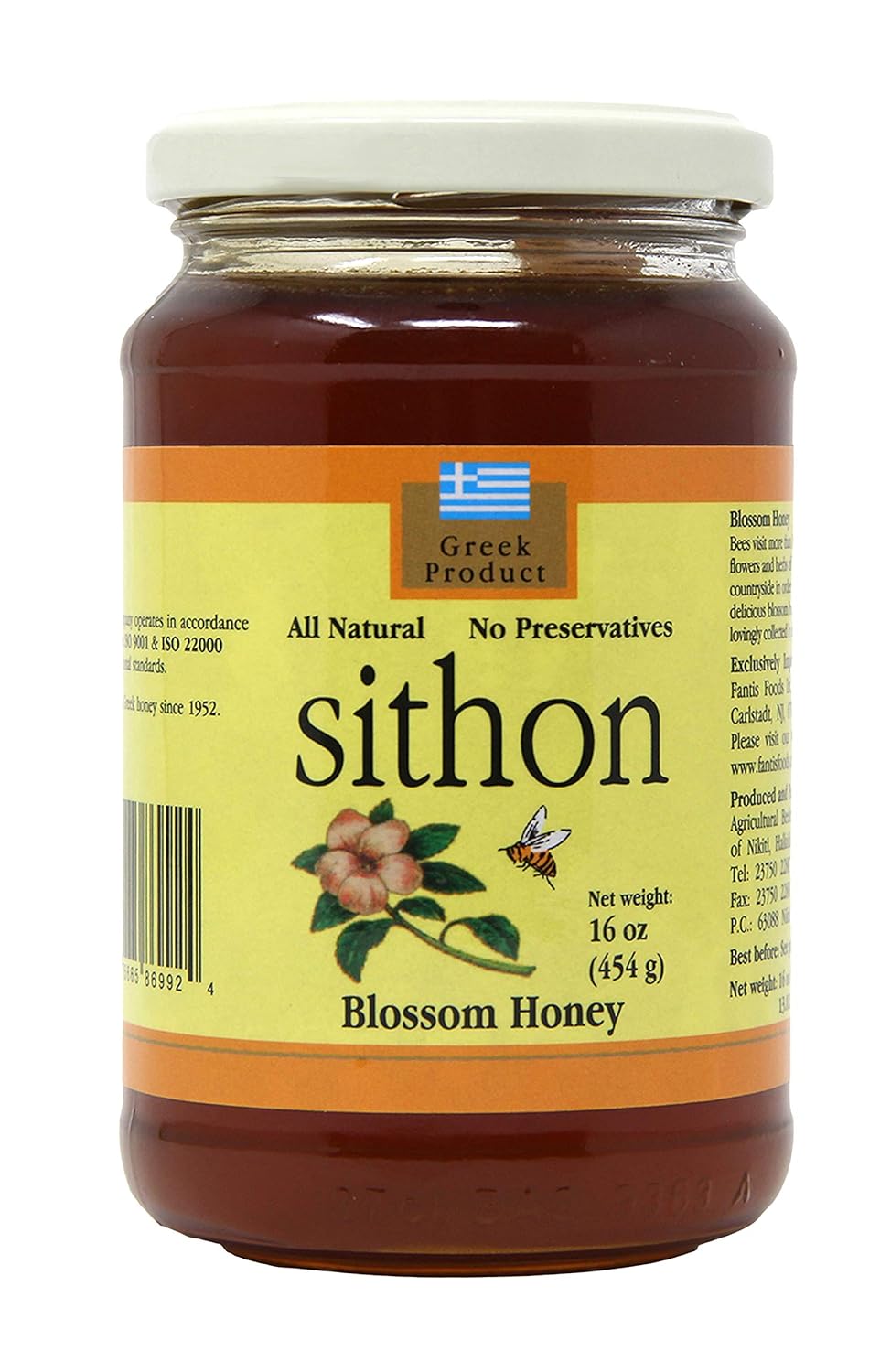

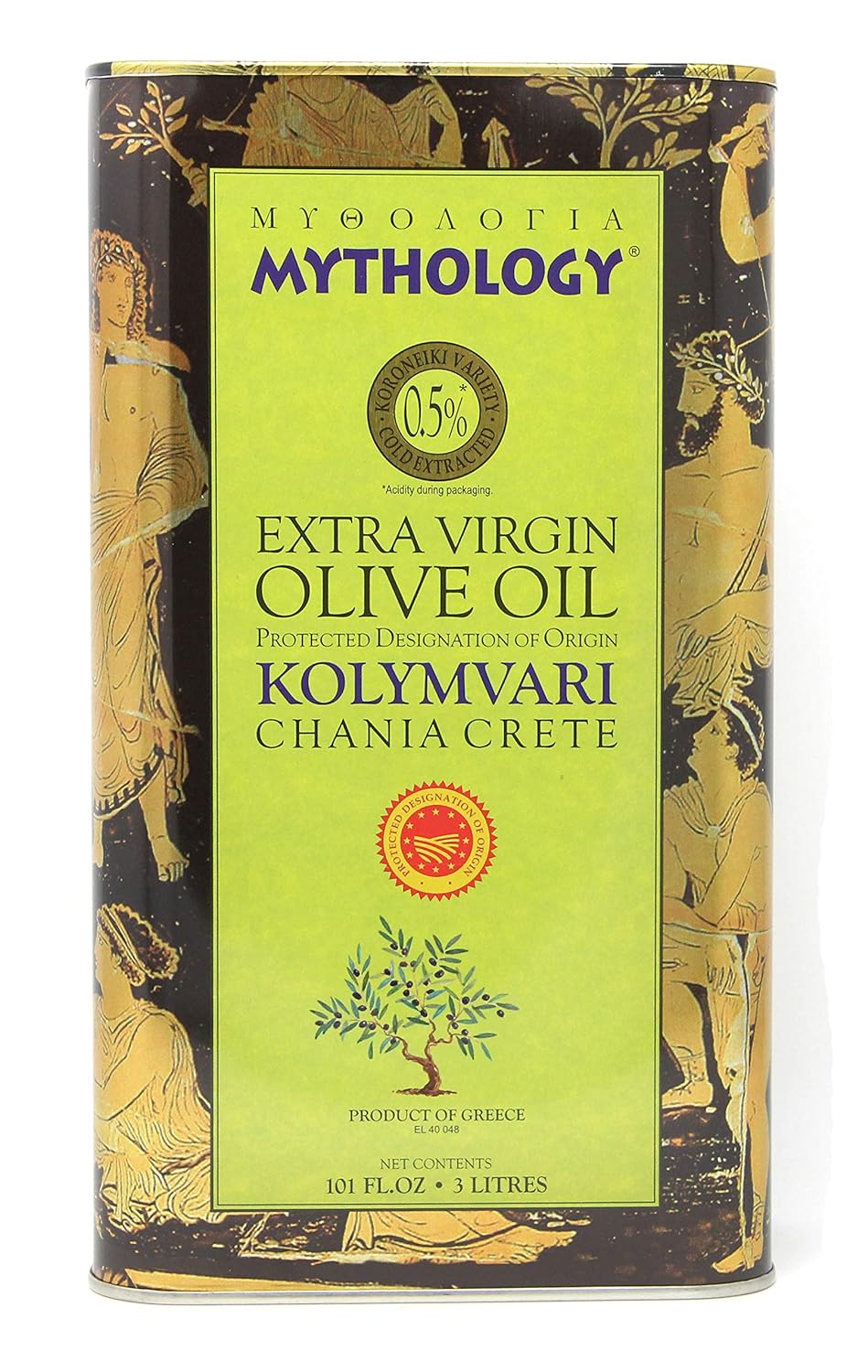

Online Store: This post contains affiliate links. If you use these links to buy something, we may earn a commission at no extra cost to you.
Author: Bob
With over 20 years in Bioinformatics and AI in Molecular Diagnostics, Bob Stavrou advises BiCos, focusing on authenticating OLIVE OIL DNA. He's also a passionate contributor to YouTube Cooking with Greek People and appeared on Greek TV show Savvatokiriako Me Ton Manesi, bridging science and culinary arts. Watch it on Alpha TV.
